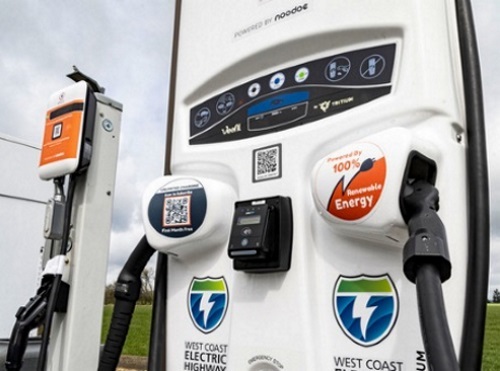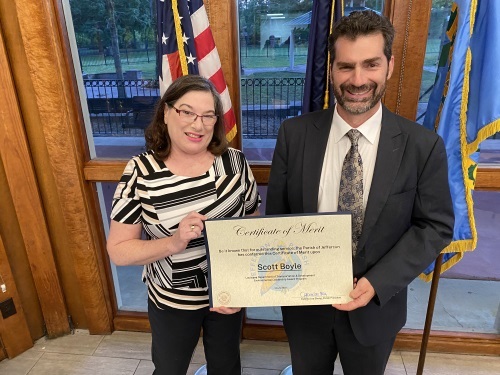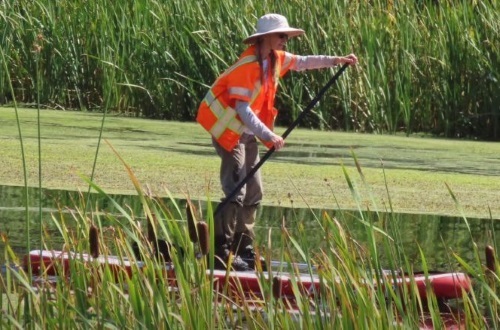FEDERAL ACTION
State DOTs Say Local Partners Help Achieve Goals – AASHTO Journal
Seventeen states sue EPA for letting California set vehicle standards – The Hill
Biden administration vows to speed up environmental permits needed for infrastructure projects – States Newsroom
EPA blocks bid to review basis for climate regs – E&E News
MARAD Adds $234.3 Million to Bolster America’s Port Infrastructure – MARAD (Media release)
COVID-19
Airlines press U.S. to lift pre-departure testing requirements – Reuters
DC Metro exploring possibility of mask-only cars – WTOP Radio
NEPA
Panel moves bill to scrap NEPA study of Postal Service fleet – E&E News
INFRASTRUCTURE RESILIENCE AND SUSTAINABILITY
NCDOT seeks grant to study moving Ocracoke ferry terminal – Coastal Review
Indiana Officials Ask Public to Weigh in on Electric-Vehicle Infrastructure – Public News Service
Watertown officials discuss report on hydroelectric plant – Watertown Daily Times
EV Infrastructure Vulnerabilities Put Cars, the Grid at Risk – Route Fifty
FAA tests airfield lighting with solar energy – Aviacionline
Delaware Extends Electric Vehicle Rebate Program – Department of Natural Resources and Environmental Control (Media Release)
AIR QUALITY
Colorado Moving Forward with Clean Truck Strategy – AASHTO’s Center for Environmental Excellence
Reducing harmful air pollution has led to a surprising effect – more hurricanes in the North Atlantic – CNN
ENVIRONMENTAL JUSTICE
EV Charging Station Map Highlights Infrastructure Disparities – Route Fifty
Transportation Sec. Pete Buttigieg Outlines Where Opportunities Meet For The Black Community And Biden’s $1.2 Trillion Infrastructure Law – BET
NATURAL RESOURCES
EPA, Corps Moving Forward on WOTUS Rules Update – ENR
Smart buoys return to Lake Erie to help monitor water quality and conditions – Cleveland.com
CULTURAL RESOURCES
NMDOT struggles to keep pace with illegal encampments – Albuquerque Journal
HEALTH AND HUMAN ENVIRONMENT/ACTIVE TRANSPORTATION
The Silent Epidemic of Pedestrian Deaths in America – Current Affairs
National Bike Month ride will bring Utahns from Ogden to Provo together in active transit -Standard-Examiner
Cincinnati officials are considering a ‘total ban’ on e-scooters, records show – WVXU Radio
City of Aspen moving toward mandatory e-bike education – Aspen Times
IndyGo Announces Wellness in Transit Pilot, Offering Free Healthcare – Indianapolis Public Transportation Corp. (Media release)
TRB RESOURCES/ANNOUNCEMENTS
Understanding the Effects of COVID-19 on Impaired Driving – TRB (Webinar)
FEDERAL REGISTER NOTICES
Notice To Establish the Advisory Committee on Transportation Equity – USDOT, Office of the Secretary (Notice)
Solicitation of Nominations for Membership to the Advisory Committee on Transportation Equity – USDOT, Office of the Secretary (Notice)
National Hazardous Materials Route Registry – Federal Motor Carrier Safety Administration (Notice; revisions to the listing of designated and restricted routes for hazardous materials)
Establishment of the Corridor Identification and Development Program – FRA (Notice of establishment; request for expressions of interest)
Early Scoping Notice for the Kitsap County Public Transportation Benefit Area Authority Proposed Seattle Fast Ferry Terminal Facility Project – FTA (Early scoping notice)
Determination To Defer Sanctions; California; San Diego County Air Pollution Control District – EPA (Interim final determination)
Air Quality State Implementation Plans; Approvals and Promulgations: California; San Diego County Air Pollution Control District; Permits – EPA (Proposed rule)
Subsistence Management Regulations for Public Lands in Alaska – Applicability and Scope; Tongass National Forest Submerged Lands – Forest Service and Fish and Wildlife Service (Proposed rule)
Call for Nominations for the California Desert District Advisory Council and the Northern California District and Central California Resource Advisory Councils – Bureau of Land Management (Notice)




